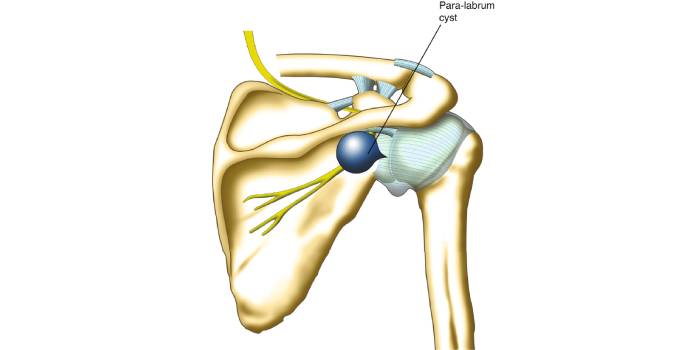
Shoulder - Arthroscopy and Sport Injury Specialist in Mumbai
Paralabral Cyst Decompression
Dr. Aditya Pawaskar is one of top notch shoulder arthroscopy Surgeon and Sports Injuries Specialist in Mumbai. With his extensive experience in orthopedics, he provides excellent care and effective treatments for patients with shoulder and knee problems.
Paralabral cyst decompression is a surgical procedure performed to address a paralabral cyst that has formed near the shoulder joint. A paralabral cyst is a fluid-filled sac that develops in the vicinity of the labrum, which is a ring of cartilage that lines the shoulder socket (glenoid). These cysts often result from underlying labral tears or other shoulder joint issues and can cause pain and discomfort.
Indications for Paralabral Cyst Decompression:
Paralabral cyst decompression is considered when:
- Symptoms Persist: Conservative treatments, such as rest, physical therapy, or medications, fail to alleviate symptoms related to the paralabral cyst.
- Pain and Discomfort: The cyst causes pain, limited range of motion, or affects shoulder function.
- Diagnosis: Imaging studies, such as MRI, confirm the presence of the paralabral cyst and its association with underlying shoulder issues.
Sports Prone to Paralabral Cyst Decompression and Injury Risks:
Paralabral cysts often occur in the shoulder joint and may require decompression procedures. These cysts can be associated with labral tears and are often seen in sports that involve repetitive overhead motions and forceful arm movements. In India, the following sports may be associated with a higher risk of paralabral cysts, necessitating decompression:
- Cricket: Fast bowlers and players involved in frequent throwing actions, such as cricket bowlers, may be prone to paralabral cysts.
- Badminton: TThe repetitive overhead motions, especially during serves and smashes, in badminton can contribute to labral tears and paralabral cysts.
- Tennis: Tennis players, particularly those engaged in overhead serving and powerful strokes, may be at risk of labral tears and paralabral cysts.
- Volleyball: Frequent overhead hitting and blocking actions in volleyball can place strain on the labrum, leading to paralabral cysts.
- Swimming: Competitive swimmers, especially those using strokes like freestyle and butterfly, may be prone to labral tears and paralabral cysts.
- Weightlifting: Heavy lifting and repetitive shoulder exercises in weightlifting can contribute to labral tears and paralabral cysts.
- Basketball: Jumping, shooting, and potential for collisions in basketball may increase the risk of labral tears and paralabral cysts.
- Gymnastics: The intense upper body movements and weight-bearing on the shoulders in gymnastics may pose a risk of labral tears and paralabral cysts.
- Wrestling: Wrestling, with its intense physical contact and potential for awkward falls, can contribute to labral tears and paralabral cysts.
- Baseball: Overhand throwing motions, as seen in baseball pitching, may be associated with a higher risk of labral tears and paralabral cysts.
Consult with Dr. Aditya Pawaskar, a Sports Medicine Specialist in Mumbai, to determine the most appropriate treatment for Knee & shoulder injuries based on individual cases and the latest medical advancements.
